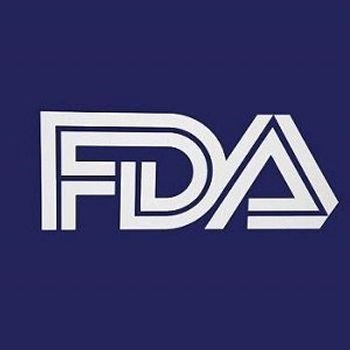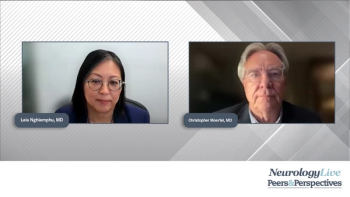
FDA Hands Capricor Complete Response Letter for Deramiocel as DMD Cardiomyopathy Treatment
Key Takeaways
- The FDA issued a complete response letter for deramiocel, citing insufficient evidence and CMC issues, prompting Capricor to plan a resubmission with additional data.
- Deramiocel's submission was based on HOPE-2 trial data, showing significant improvements in cardiac function and muscle preservation compared to placebo.
Capricor Therapeutics navigates FDA challenges for deramiocel, aiming to advance treatment for DMD-related cardiomyopathy with promising trial data.
According to a recent update from Capricor Therapeutics, the FDA has given the company a complete response letter (CRL) for its investigational cell-based candidate deramiocel as a potential treatment for cardiomyopathy in patients with Duchenne muscular dystrophy (DMD). The agency has reached out to Capricor to set up a Type A meeting to discuss the best path forward for the cell therapy.1
In the CRL, the FDA claimed it was unable to review the biologics license application (BLA) in its current form, citing that it did not meet requirement for substantial evidence of effectiveness. In addition, the agency noted outstanding items in the Chemistry, Manufacturing, and Controls (CMC) section of the application, most of which Capricor claimed it believed to have addressed in prior communications to the FDA.
The submission for deramiocel was based on data from the HOPE-2 trial (NCT), its open-label extension, and natural history comparisons from FDA-funded datasets. Following the CRL, Capricor plans to resubmit with additional data from the ongoing phase 3 HOPE-3 trial to provide more evidence of effectiveness.
"We believe these data, if positive, along with our existing long-term clinical results showing cardiac stabilization, preservation of skeletal muscle function, and a consistent safety profile, could support efforts to resolve the questions raised by the FDA for the treatment of cardiomyopathy associated with DMD,” Linda Marban, PhD, chief executive officer at Capricor, said in a statement regarding HOPE-3.1 "While this was an unexpected decision by the FDA, we remain committed to the DMD community to get Deramiocel through the approval process."
HOPE-3, a placebo-controlled trial, tests the therapeutic safety and efficacy of 2 doses of deramiocel against placebo in non-ambulatory and ambulatory boys with DMD cardiomyopathy. The dual-cohort study included 104 eligible patients who will receive either treatment every 3 months for a total of 4 doses during the first 12 months of the study, followed by an optional open-label extension. HOPE-3, which uses change in Performance of the Upper Limb version 2.0 as the primary end point, is expected to conclude in late 2026.
Deramiocel originally had a PDUFA date set for August 31, 2025, and if approved, would become the first medication specifically targeting DMD-related cardiomyopathy, and the first cell therapy indicated for the disease. Months ago, the FDA noted it was going to hold an Advisory Committee meeting for the cell therapy, but later indicated to Capricor that it would not be needed at this time.2,3
READ MORE:
HOPE-2 enrolled 26 patients, 8 who were randomized to deramiocel, 12 to placebo, and 6 who were excluded due to screening failure. All told, deramiocel-treated patients showed a statistically significant 36.2% improvement over placebo in 12-month mid-level elbow PUL1.2 scores (mean difference, 2.6 points; 95% CI, 12.7-59.7; P = .014). Treatment with the cell therapy led to significant reductions in creatine kinase (CK-MB) as a proportion of total CK over 12 months, indicating less cardiac muscle damage, with a 29.1% difference vs placebo (95% CI, 4.0-54.2; P = .025).4
More recently, at the Parent Project Muscular Dystrophy (PPMD) 2025 Annual Conference,
At the time of the released data, Marban told NeurologyLive that "In our treated patients, we see year over year improvement or stabilization of cardiac function. If you compare it to natural history–which we’ve showed to the FDA–this does not happen. These are extraordinary results and extraordinary times in a well-defined patient population. We’re pretty excited about [the data]."
In a subgroup of patients with baseline LVEF greater than 45%, treatment with deramiocel demonstrated an even greater clinical benefit on cardiac function, with a positive median change of 0.9 in LVEF observed at month 48. Regarding upper limb muscle function, patients receiving the cell therapy experienced a mean decline of just –0.6 points in Performance of Upper Limb (PUL) 2.0 scores after four years of treatment. Notably, the rate of decline slowed over time, with annual decreases improving from –1.8 in year 1 to –1.2 in year 2, –1.1 in year 3, and –0.6 in year 4, suggesting a potential long-term stabilizing effect with continued therapy.
REFERENCES
1. Capricor Therapeutics Provides Regulatory Update on Deramiocel BLA for Duchenne Muscular Dystrophy. News release. Capricor Therapeutics. July 11, 2025. Accessed July 30, 2025. https://www.capricor.com/investors/news-events/press-releases/detail/319/capricor-therapeutics-provides-regulatory-update-on
2. Capricor Therapeutics Provides Regulatory Update on Deramiocel BLA for Duchenne Muscular Dystrophy. News release. June 24, 2025. Accessed July 30, 2025. https://www.capricor.com/investors/news-events/press-releases/detail/318/capricor-therapeutics-provides-regulatory-update-on
3. Capricor Therapeutics Announces Completion of Mid-Cycle Review Meeting with FDA on Deramiocel for the Treatment of Duchenne Muscular Dystrophy Cardiomyopathy. News Release. Capricor Therapeutics. Published May 5, 2025. Accessed July 30, 2025. https://www.capricor.com/investors/news-events/press-releases/detail/311/capricor-therapeutics-announces-completion-of-mid-cycle
4. McDonald C, Marban E, Hendrix S, et al. Repeated intravenous cardiosphere-derived cell therapy in late-stage Duchenne muscular dystrophy (HOPE-2): a multicentre, randomised, double-blind, placebo-controlled, phase 2 trial. The Lancet. 2022;399(10329):1049-1058. doi:10.1016/S0140-6736(22)00012-5.
5. Capricor Therapeutics Announces Positive 4-Year Data from HOPE-2 Open-Label Extension Study of Deramiocel in Duchenne Muscular Dystrophy. News release. Capricor Therapeutics. June 20, 2025. Accessed July 30, 2025. https://www.capricor.com/investors/news-events/press-releases/detail/317/capricor-therapeutics-announces-positive-4-year-data-from
Newsletter
Keep your finger on the pulse of neurology—subscribe to NeurologyLive for expert interviews, new data, and breakthrough treatment updates.



















